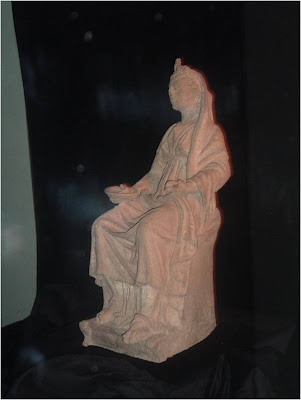Like many other expatriate Italians who live and work in other countries, the art of
Valerio Cugia di Sant'Orsola reflects nostalgia for the mother land.
When the grey skies of northern European cities become overwhelming, the artist retreats into the memory of warm Mediterranean afternoons. Using his brushes and colors he recreates the sensations that we who live in Italy take for granted.
The artist 's personal exhibit is now being held at
Galerie Albert Premier, one of the top art galleries in
Brussels, until April lst. Here are some photos of the gallery before the crowds arrived.
 |
| Valerio and Petra Cugia |
 |
| Mrs. Scheepers, gallery owner and mascot Jojo |
 |
| before the opening |
The landscapes and still life paintings are a feast for the eyes and the hearts of nostalgic Italian expats and all who love Italy, her colors and flavors.
Puglia, Rome and the artist's ancestral home- Sardinia - are often portrayed.
Cugia's art has been described by numerous art critics and his love for the colors of southern climes is evident in all his work.
Check the
artist's website for biography, critical acclaim and a panorama of his work.
Homage to Rome, its historical cafes and archeological sites are also favorite themes of Valerio's work.
.jpg) |
| Caffe Greco |
 |
| Roman Forum |
Cugia has mastered the affresco technique used by Michelangelo.
Here are some views of the fresco cycle which visitors to Vetralla will recognize.
 |
| The Four Elements: water, air, fire, earth |
 |
| Cugia at work on fresco , 1994 |
 |
| night in the tropical forest |
The different
giornate of work are clearly visible here.
 |
The Rise of Civilization, inspired by Saturnia
|


































.jpg)
















